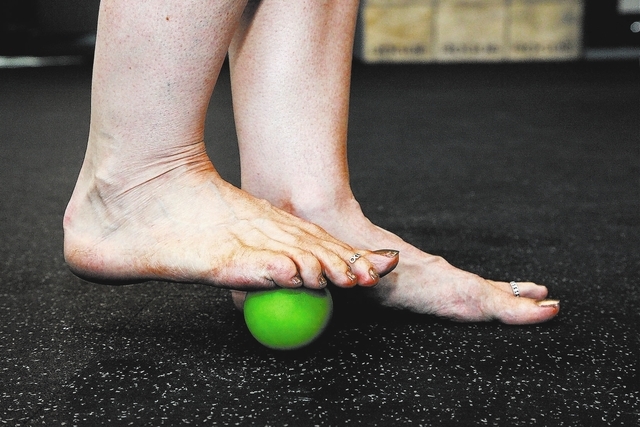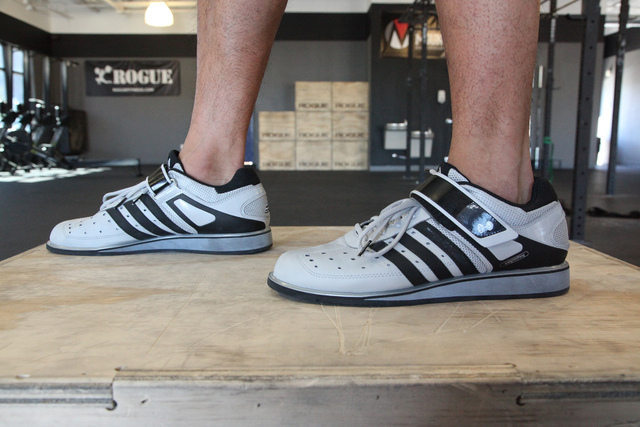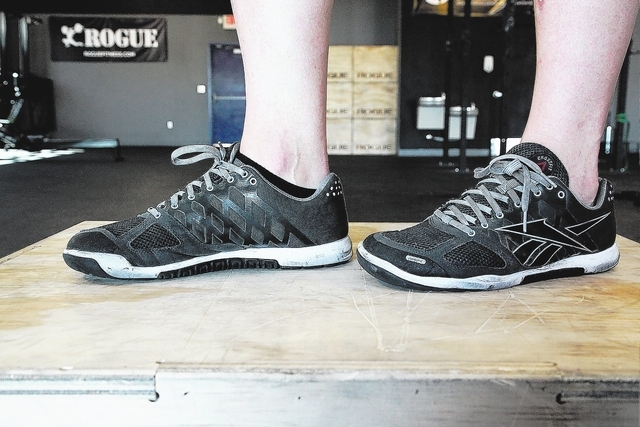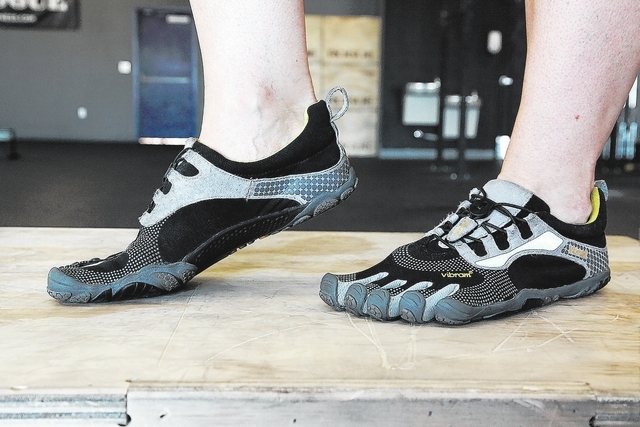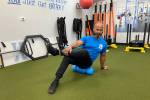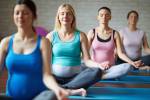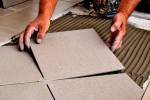Our feet really deserve the VIP treatment
Finally! I am not the only one in my house who makes a mess. My daughter, inheriting my untidy gene, likes to leave her toys all over the house. Just like me, she gets carried away having fun and before long the house is a wreck.
Among the kid toys are a white lacrosse ball and a yellow golf ball with a SpongeBob SquarePants face. Those two “toys” are mine. I use them for some of the various foam rolling techniques I have covered in past columns. Today’s technique is especially for the feet.
Why bother with the feet, you might ask. To merely say your muscles work together is an understatement. The relationship from one muscle to another and their connection to your nervous system to manipulate your skeletal system into performing movement is downright amazing. This sophisticated rigging, also known as your body, is held together by connective tissue.
Therapists specializing in various disciplines refer to these tissues as meridian or fascial lines. The connective tissues that link certain muscle groups together form different lines.
Therapists know how to assess the various lines based on their specific education and determine effective treatments. What those lines are called and how they work is not the topic today, but one thing you should know is that those lines begin or end at the bottom of the foot.
Any imbalance at any muscle group affects the rest of the line. For example, if the hamstring is tight, other muscles that may be affected by varying degrees are the calves, back of the knees, and lower back, midback, upper back and neck at either side of the spine. Guess what else falls within this line, the bottom of the foot.
As tension is released in any area along the line, it aids in helping the others to release. The bottom of the foot is a place of highly concentrated nerve endings. Some gentle rolling with a golf or lacrosse ball can be an effective way to relieve tension fast.
As with any type of foam rolling, use the pain scale to protect yourself. On a scale from 1 to 10, 10 being intense, don’t apply pressure above an 8. Superpainful pressure can have the opposite effect and cause the muscle to tighten.
Care for the feet goes further than just some rolling now and then. Proper footwear is important. If you have been to the gym lately you have probably seen some interesting shoes and some that you might not consider shoes at all.
Featured today are shoes tailored to certain sports. I believe you should find a shoe that best fits your athleticism.
Most people do fine with a cross-trainer shoe. They have been around for years and many brands make them. Those are designed for running, jumping and lateral movements. They are by far the most common shoe in the gym because they are a do-everything kind of shoe.
If you choose to specialize or perform predominantly one kind of exercise then you will want to find a shoe for your activity. Any distance runner will tell you to get a running shoe if you plan to start running. They help with the proper foot strike and can save your knees from the stresses of the sport.
Running shoes do wear out. They are like brake pads on a car, get new ones when you feel them start to go out.
If you like to lift and keep the cardio to a minimum, then an Olympic shoe is for you. The unique aspect of these shoes is in the solid heel. They have about an 8 degree lift in the heel to facilitate artificial dorsiflexion of the ankle. This helps lifters keep a straighter spine when lifting as well as find more depth in big movements such as squats, dead lifts, power cleans and snatches.
Various sports will have unique shoes to fit their demands. Football and soccer cleats are made for gripping into turf while wrestling shoes are made for the mat.
Whatever your sport, look into the footwear that goes with it. Shoe companies spend large amounts of money on research and development to tailor the shoes to what the athlete needs.
There is a footwear movement out there that advocates a minimal type of shoe. Designed around letting the foot move more naturally, they are some of the smallest and lightest shoes on the market.
They facilitate a toe strike instead of a heel strike to reduce wear on the joints. Some have no arch while others do. They are made of light, breathable materials and some even have room for each toe to fit.
Others perform best with a simple orthotic. These give the foot support to keep the ankles, knees and hips aligned; once again leading back to the fact that the feet can affect the entire body. For example, if the arch is collapsed, the stress can be felt up the leg into the back as lower back pain. You may be surprised just how much of a role your feet play in your physical fitness.
Chris Huth is a Las Vegas trainer. He can be reached at 702trainer@gmail.com. If you are a Las Vegas trainer and want to share your love of fitness as a guest coach, please contact him. Consult your physician before beginning any exercise program.




